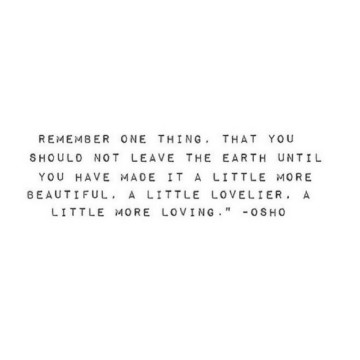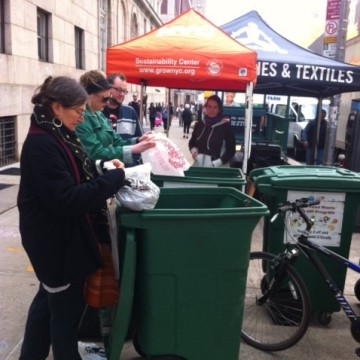When I left my job at an animal protection organization, I was worried. Despite feeling unsettled and depressed with the environment, I never once regretted the actual work. It was a comfort to know that I was getting paid to better the lives of animals suffering in laboratories, and in a way I saw my whole world through a philanthropic lens.
So when I quit my job and took a position at another organization, I became concerned that I would burn out easily, knowing that I no longer played a direct role in changing policy or public sentiment. But of course, we don’t need to confine ourselves to professional altruism to feel that we’re making a difference. We can instead commit to an outward focus, one that seeks to benefit our communities, even in the smallest of ways.
1. Leave things prettier than how you found them.
I recently read about a cyclist in Boston who, in an effort to prevent drivers from coming too close to bike lanes on busy streets, placed fresh flower bouquets between lanes as a temporary barrier. Instead of using obtrusive cones or blockades, he sought to make commuting a little more pleasant, a little more beautiful.
It’s an effort like this–noticing something that can be improved upon, and making it beautiful–that forms the center of community building. Your gestures don’t have to be particularly grandiose, either: mowing a neighbor’s lawn, planting flowers in front of your library, or picking up trash off the sidewalk are all simple but important acts.
2. Patronize as many independent businesses as possible.
Whether you live in a big city or small town, you’re bound to have at least a few local shops or restaurants nearby. In a world where we’ve become accustomed to purchasing goods at big chain stores for convenience and price, it’s not unheard of to go months without stopping at the flower shop on the corner or the cute Italian restaurant down the street. Since moving to Boston, I’ve shopped at more independent businesses than I ever did in Arizona. It’s so comforting to walk into a small shop and chat with the owner, and then showing my support with a purchase. I love using something and fondly remembering the item’s origin.
3. Plant or adopt a tree.
When I was ten or eleven, my dad and I walked around my neighborhood to pick a tree to “adopt.” We even made a special etching of the bark, which memorialized the occasion. Now, every time I go home for the holidays, I pass by the tree and fondly remember that special time shared with my dad.
If you’re looking for a simple way to connect with nature in your area, consider adopting–or, if you’re ambitious, planting–a tree.
4. Recycle and compost.
If you’re not recycling and/or composting, take a moment to consider how this negatively impacts the environment, both within your community and the planet at large. If you’re a novice, don’t worry: there are plenty of beginner-friendly guides available online that will provide you with all the tools you need to get started. If you have nowhere to discard your compost at home, find out if there’s a compost drop-off at your local farmer’s market or community garden.
5. Volunteer.
Volunteering might seem like an obvious way to become involved with your community, but it bears repeating, especially if you’re looking for a more intimate way to connect with others. Don’t forget that there’s an “off-season” for community service, often in the summer months where it’s assumed that there is less of a need for service. To the contrary, shelters and food kitchen are commonly overrun with help over the holidays, so the point where some are forced to turn volunteers away. If you’re looking to make a positive impact, find out when and where there’s the greatest need for service.
Feeling fired up? Check out these ideas:
10 Animal-Friendly, Conscious Fashion Brands
How to Be More Giving and Feel Happier
5 Animal-Friendly Charities to Help Out
Dispatch – A Trip to Maple Farm Sanctuary
__
Photo: Hashtaglunchbag via Instagram; Peaceful Dumpling






